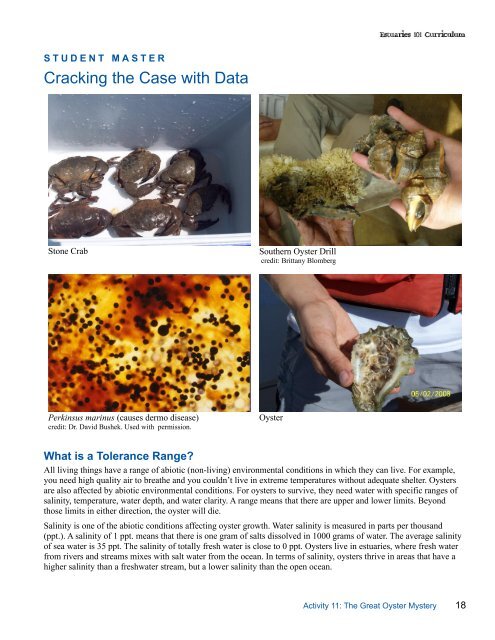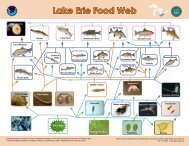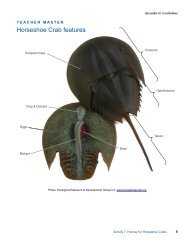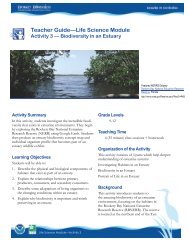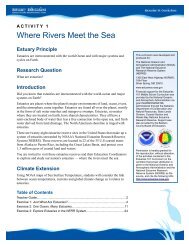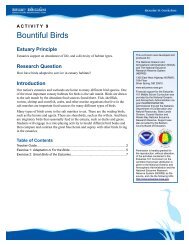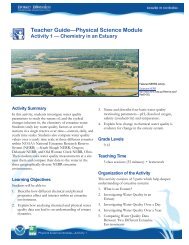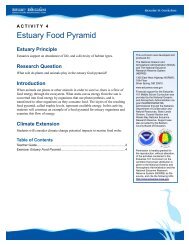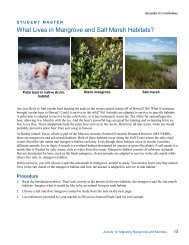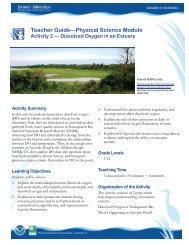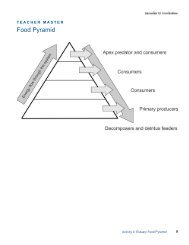The Great Oyster Mystery Teacher Guide - Estuaries NOAA
The Great Oyster Mystery Teacher Guide - Estuaries NOAA
The Great Oyster Mystery Teacher Guide - Estuaries NOAA
Create successful ePaper yourself
Turn your PDF publications into a flip-book with our unique Google optimized e-Paper software.
S T U D E N T M A S T E RCracking the Case with DataStone CrabSouthern <strong>Oyster</strong> Drillcredit: Brittany BlombergPerkinsus marinus (causes dermo disease)credit: Dr. David Bushek. Used with permission.<strong>Oyster</strong>What is a Tolerance Range?All living things have a range of abiotic (non-living) environmental conditions in which they can live. For example,you need high quality air to breathe and you couldn’t live in extreme temperatures without adequate shelter. <strong>Oyster</strong>sare also affected by abiotic environmental conditions. For oysters to survive, they need water with specific ranges ofsalinity, temperature, water depth, and water clarity. A range means that there are upper and lower limits. Beyondthose limits in either direction, the oyster will die.Salinity is one of the abiotic conditions affecting oyster growth. Water salinity is measured in parts per thousand(ppt.). A salinity of 1 ppt. means that there is one gram of salts dissolved in 1000 grams of water. <strong>The</strong> average salinityof sea water is 35 ppt. <strong>The</strong> salinity of totally fresh water is close to 0 ppt. <strong>Oyster</strong>s live in estuaries, where fresh waterfrom rivers and streams mixes with salt water from the ocean. In terms of salinity, oysters thrive in areas that have ahigher salinity than a freshwater stream, but a lower salinity than the open ocean.Activity 11: <strong>The</strong> <strong>Great</strong> <strong>Oyster</strong> <strong>Mystery</strong> 18


